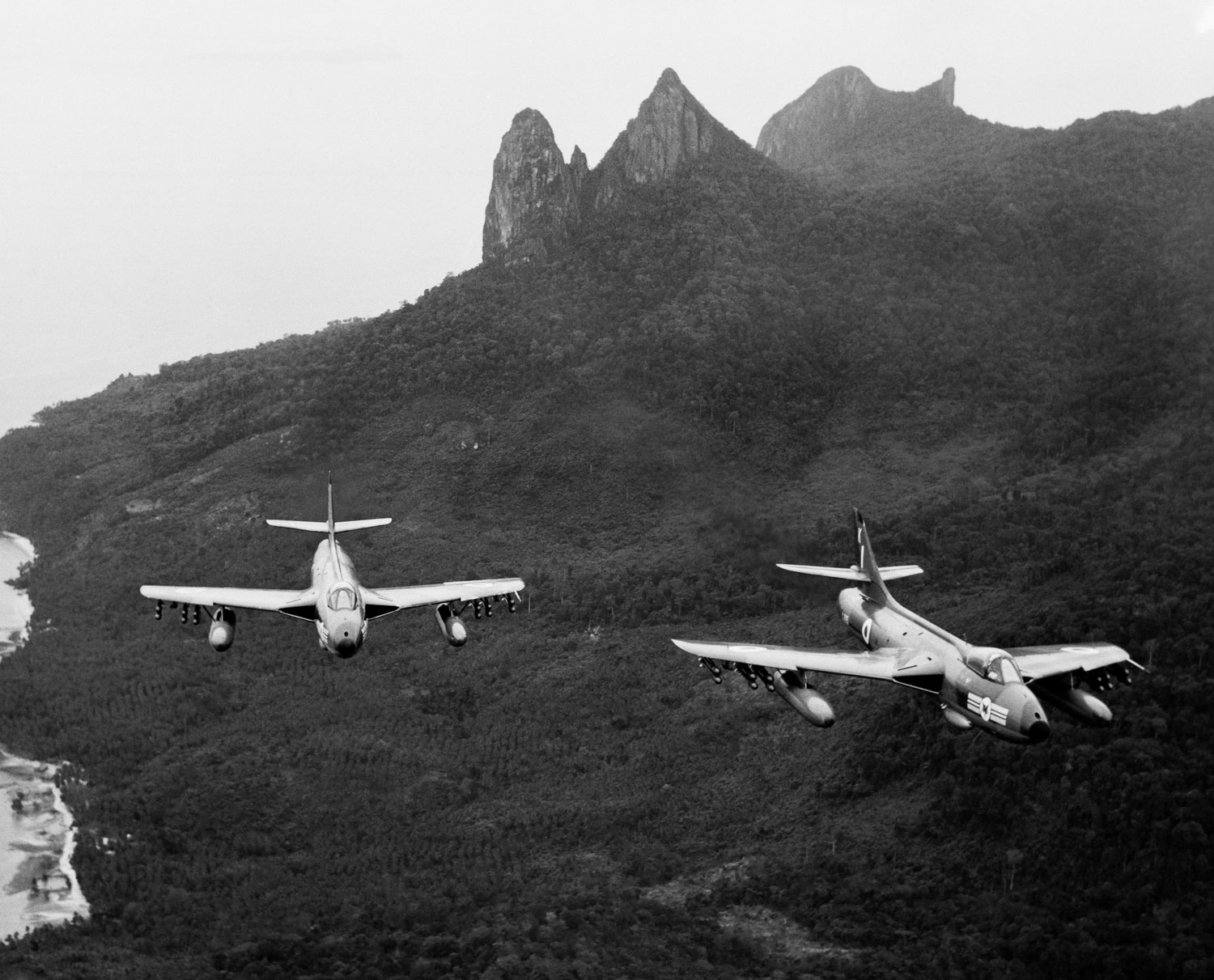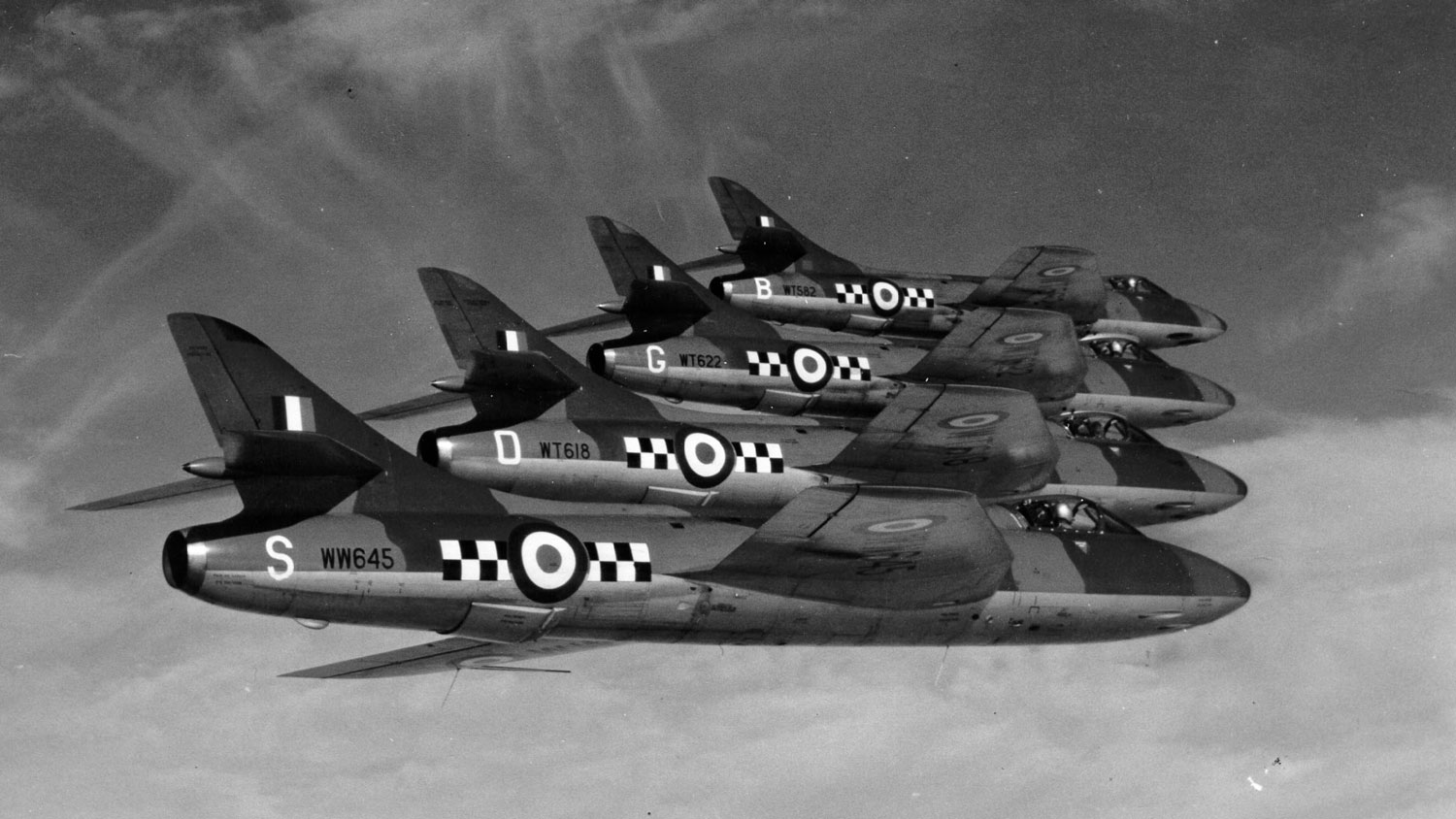The real Maverick: The RAF pilot who flew his Hunter through Tower Bridge
In April 2018, the centenary of the Royal Air Force was celebrated across the nation with a series of vibrant events which culminated in a spectacular flypast of 103 aircraft over Buckingham Palace.
The Queen gave a rousing speech, people hosted street parties, a Spitfire pilot returned to the skies and an official tour gave members of the public the chance to get up close to RAF aircraft across several cities.
But in April 1968, as the Royal Air Force marked its half-century, things were markedly different and maverick pilot Flight Lieutenant Alan Pollock, wasn't best pleased.
An event at RAF Abingdon was planned for the summer as well as some parades, but there wasn't much else to show for an innovative and proud first 50 years in the air.
And Flt Lt Pollock wasn't going to let that stand.
The Hawker Hunter Tower Bridge incident
After returning from a busy exercise in Gibraltar to their base at RAF West Raynham in Norfolk, Flt Lt Pollock and three other Hawker Hunter pilots from No 1 (Fighter) Squadron were sent to RAF Tangmere in Sussex to provide a celebratory flypast.
While on the ground chatting to RAF personnel and their families, Flt Lt Pollock was horrified to discover that many weren't aware the event was being held to mark the RAF's 50th anniversary.
The next morning, as he prepared to depart with the rest of his squadron for their home base, Flt Lt Pollock decided he would take matters into his own hands and do something to focus attention on the anniversary.
Needing a map to safely navigate his way to London, Flt Lt Pollock found just the man to help.
Speaking to BFBS in 2018, Flt Lt Pollock said: "I think it was Warrant Officer Beech, from memory.
"I went in and just said did they have an AA book, you know, because I thought, goodness me, you've normally got a target map.
"What was in the centre of the AA book, you know, for London and all in red and what have you.
"I mean, goodness me, I wish I hadn't seen it. I nearly chickened out at that stage."
Only Pollock could have done it
Minutes into the flight, the daredevil pilot broke away in his Hunter jet and set a course directly for central London.
Of this deviation in the plan, aviation artist Michael Rondot said: "Only Pollock could have done it, would have done it, did do it."
In order not to raise suspicion about his actions, the pilot used morse code to let the other three aircraft know he had lost visual contact with them and would make his own way back.
It was at this point he set a new course.
He said: "The beauty of the bridges was the first thing, and then going round the bend and then being a bit surprised at Millbank Tower... because it rather spoiled what I was trying to do.
"And the Houses of Parliament... it was just like a model village.
"Looking down, I felt a little ashamed, really, because it was slightly uneven, my three turns over the Houses of Parliament.
"On the way back, I gave myself a new call sign.
"Being 1 Squadron, I used a different call sign and said Romeo Alpha Foxtrot Zero One."
By this stage, RAF01 was flying the Hunter so low that people looking out of the sixth-floor windows at the Ministry of Defence building had to look down, not up, to see the aircraft.
Knowing he would likely be punished by the RAF for his disobedience, Flt Lt Pollock wanted his daring action to have an impact so, after soaring in the sky above the Houses of Parliament a few times, he changed tactic.
He said: "I was travelling slowly... until I got to the Thames because I mean it makes very little noise, the Hunter throttled back.
"But then I thought, you know, have a bit of the Rolls-Royce Avon over Parliament and amazingly, on that day... they were actually debating aircraft noise. You couldn't make it up.
"Three MPs, they put forward this motion, you know, supporting what I'd done, but all that was withdrawn, it was never put in Hansard."
A quick wing waggle by way of a salute over the RAF Memorial near Whitehall, and it was time to head back down the Thames and home.

The jet passed low and fast over Hungerford, Waterloo and Blackfriars bridges and then Flt Lt Pollock looked further ahead and saw the iconic Tower Bridge.
At the speed he was flying – 380 knots – he only had seconds to decide whether or not to fly between the car deck and the bridge's walkways.
He said: "I think anybody doing our role would be intrigued at that and all I did was get down to study the problem, so to speak.
"It sounds a bit nonsensical, but you can have a level of thought process [in two seconds] and... I realised that the bus was just starting crossing and that I'd have to go as high as possible and just miss.
"Like a reverse bombing, you know, instead of the queues below, the queues were above me.
"All of a sudden, at the last fraction of a second as I went through I suddenly had this thought that I'd got a fin behind me.
"That's when my heart stopped. That was fascinating really.
"The way it had this really physical reaction and then it restarted again. It was just that instant flash."

His decision ensured he would forever be remembered in the history of aviation, and after flying over Wattisham, Mildenhall and Lakenheath it was time to land back at RAF West Raynham to face the music.
Top brass weren't thrilled at Flt Lt Pollock's actions - but also weren't too sure what to do with him either.
The pilot suggested that perhaps they should start by arresting him, which they promptly did.
In the aftermath, Flt Lt Pollock received hundreds of letters of support from the public, his fellow RAF colleagues and even a barrel of beer from the British Overseas Airways Corporation airline, the predecessor of British Airways.
Ultimately, Flt Lt Pollock received a medical discharge from the RAF instead of facing a court martial.
This decision may have been made to prevent him from publicly explaining that his actions stemmed from budget cuts to the Royal Air Force and the absence of celebrations for the RAF's 50th anniversary.
While Flt Lt Pollock is one of only five people to fly under Tower Bridge, he is the only one to do it in a jet – a feat unlikely to be repeated again.









